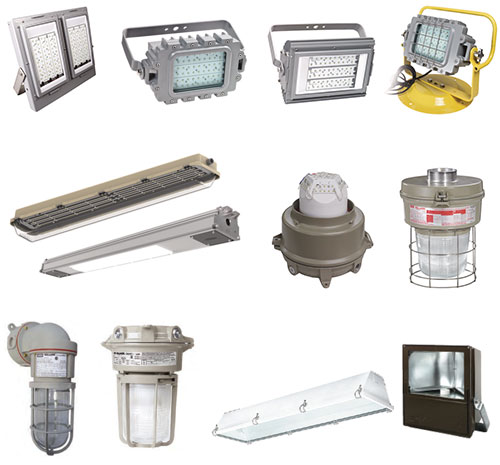
Upgrading explosion-proof or hazardous lighting fixtures from High-Intensity Discharge (HID) or fluorescent to LED technology is a critical decision for facility managers. This resource aims to outline the technical considerations for choosing new LED fixtures over retrofitting existing ones with LED bulbs.
Technical Considerations for Retrofitting
- Safety and Design Integrity: Explosion-proof fixtures are designed to prevent the ignition of flammable gases or dust. Retrofitting these fixtures with LED bulbs can compromise their safety features. LED bulbs generate heat differently from HID or fluorescent bulbs, which could affect the fixture’s ability to safely contain or dissipate heat.
- Electrical Compatibility: LED bulbs require different electrical inputs than HID or fluorescent bulbs. Retrofitting involves modifying the fixture’s electrical components, which can introduce risks of electrical failure or improper installation.
- Compliance and Certification Risks: Certified explosion-proof fixtures meet specific safety standards. Retrofitting can void these certifications because the modified fixture has not been tested for safety in its new configuration. This leads to potential non-compliance with industry standards and regulations.
- Liability Concerns: Modifying fixtures may shift liability to the facility if any accidents or failures occur due to the retrofitting. This could have serious legal and financial implications.

Benefits of New LED Explosion-Proof Fixtures
- Designed for Safety: New LED fixtures are engineered to comply with safety standards for hazardous locations. They are tested to ensure they do not compromise the safety of the environment in which they are installed.
- Optimized Energy Efficiency: LED technology is more energy-efficient than HID or fluorescent lighting. New fixtures are specifically designed to maximize energy savings and operational efficiency.
- Durability and Reliability: Without the need for retrofitting, new LED fixtures eliminate compatibility and safety concerns. They offer longer service lives and require less maintenance, providing better long-term value.
- Current Certifications: New fixtures come with up-to-date certifications, ensuring they meet the latest safety standards and regulatory requirements.
Conclusion
For facility managers, the technical and safety implications of retrofitting versus purchasing new LED fixtures are clear. While retrofitting may appear to be a cost-saving option, it introduces significant risks and potential liabilities. New LED fixtures, designed specifically for hazardous environments, offer a safer, more reliable, and compliant solution. Investing in new LED technology is not only a commitment to safety but also to the operational efficiency and long-term viability of the facility’s lighting infrastructure.
Please consider Forthright LED Lighting when your ready to research new LED explosion proof light fixtures. Contact us.